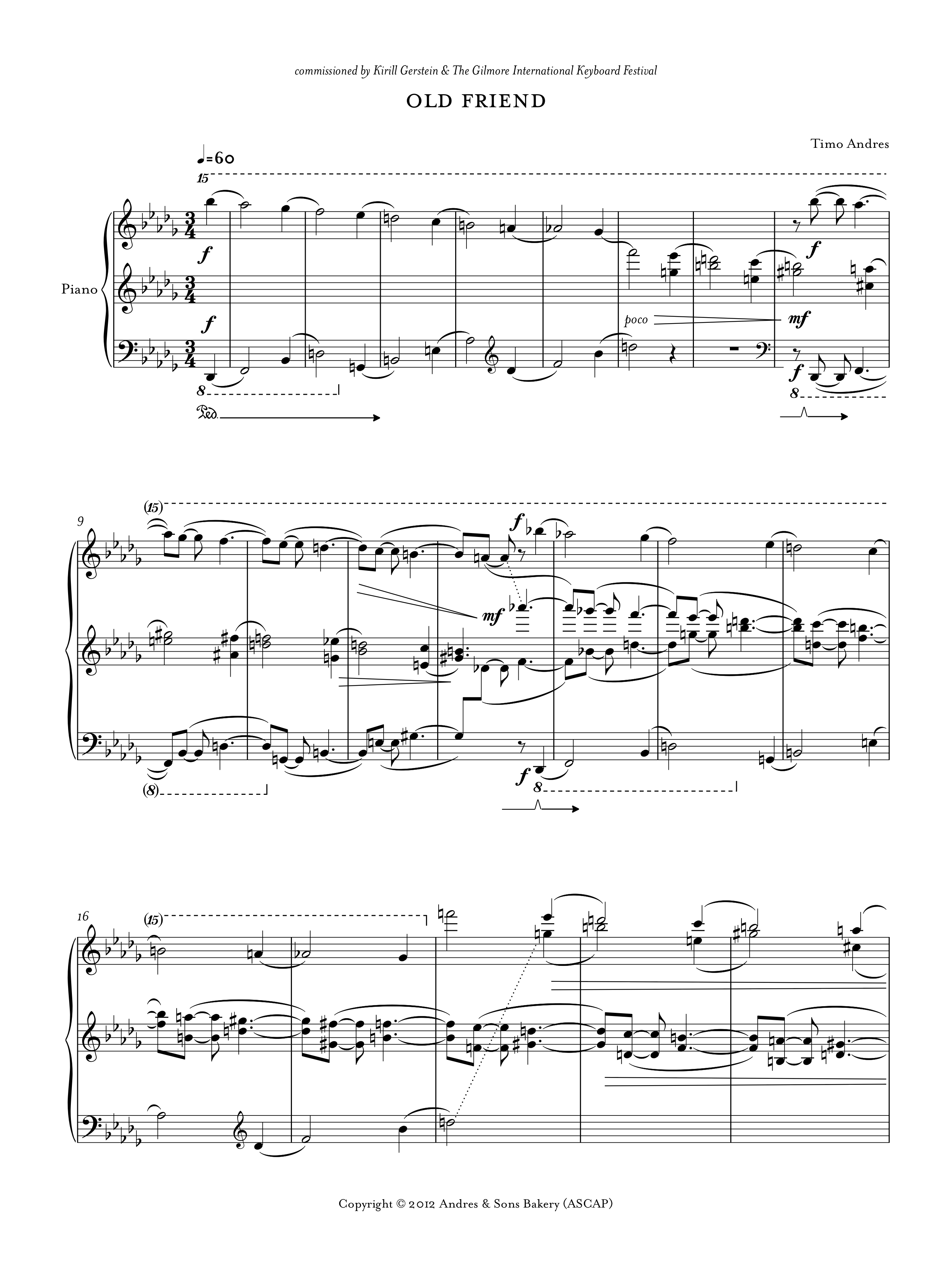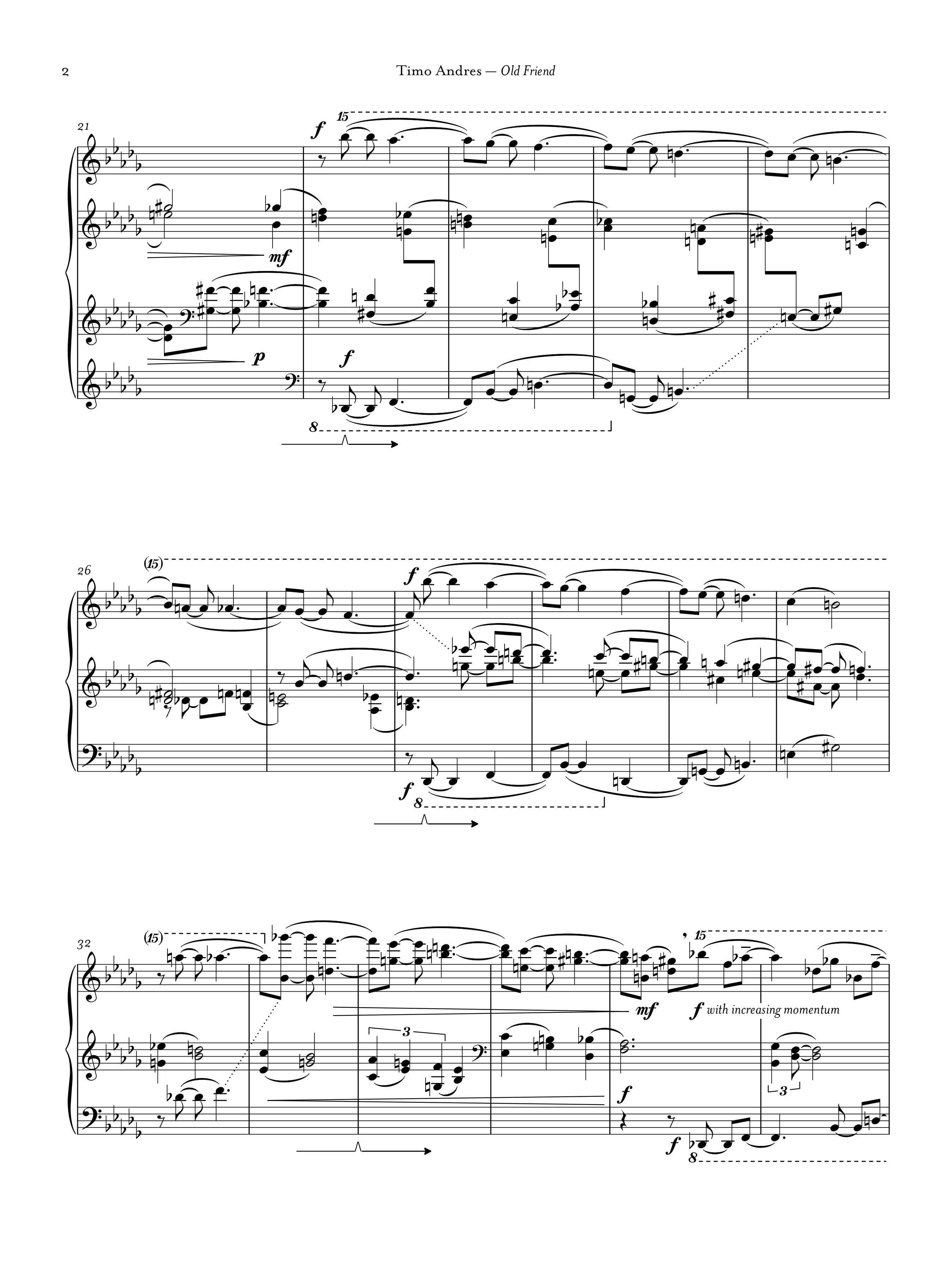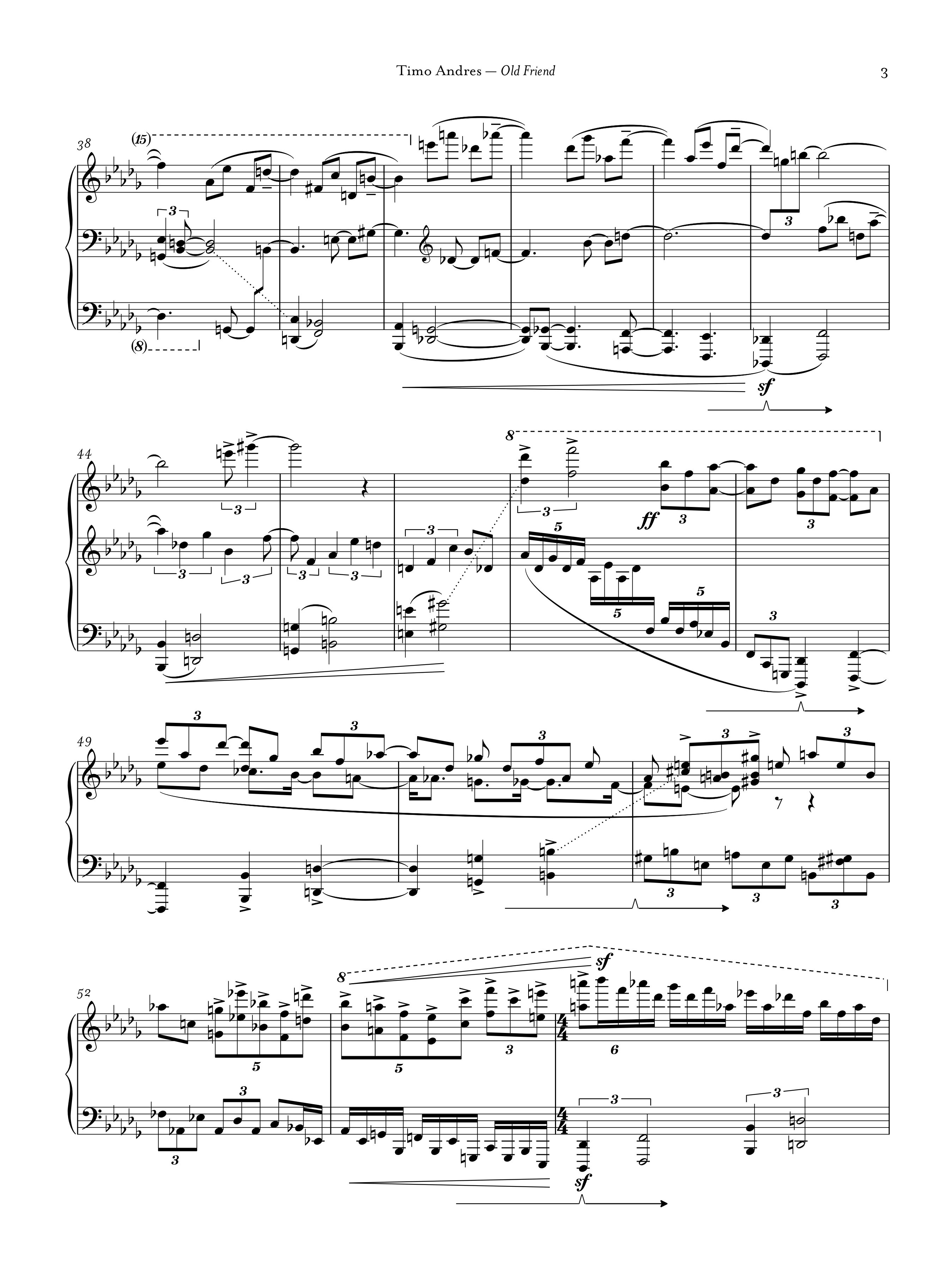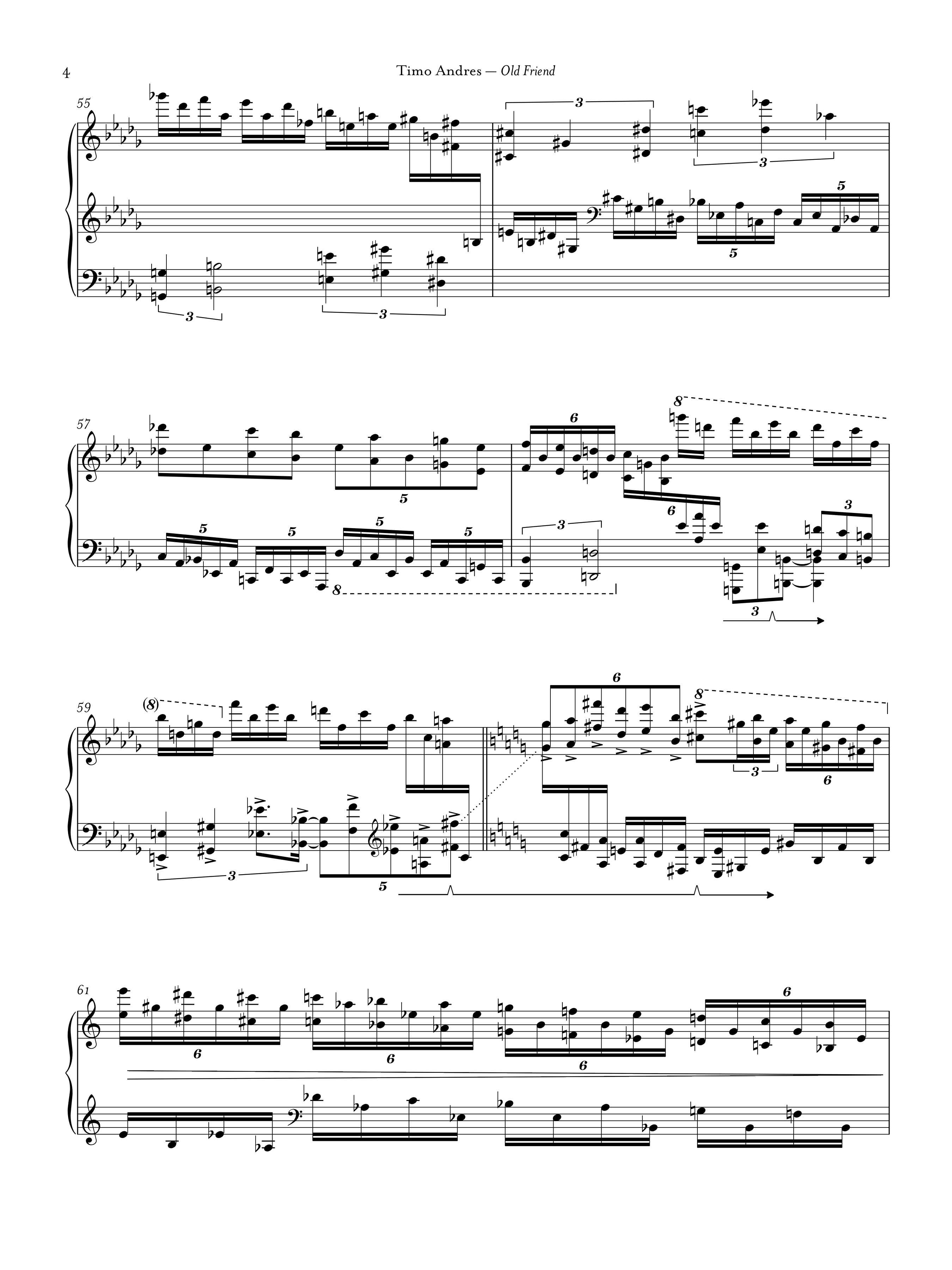Note
Old Friend starts with a big section based on a skeletal melody I extracted from Chopin’s third scherzo. Starting at opposite ends of the keyboard, both two hands move toward each other at the center. When they meet, they continue downward—but the melody also starts again at both ends, displaced by half a beat. These individual entrances—a canon of sorts—build up momentum, volume, and harmonic density, and things start to go a bit haywire. New canonic entrances start to appear where they shouldn’t, certain lines accelerate wildly, and before long it’s a snarl of notes, octaves and arpeggios moving up and down the keyboard all at once, crossing each other and starting again.
Through this first section, the rising left hand notes gradually morph into their own new idea—a cycle built from five-note groups which is like a machine for changing keys, constantly doubling back on itself, rising and falling unpredictably but always in strict rhythm. Before too long, these quintuplets are the only thing going, first loud and brilliant, rising to the very top of the keyboard, then mirrored by a soft and gentle response.
The quintuplets wind down, leaving the music open and spare. A new version of the opening melody is played very high, but it has a new character, stumbling back, lurching forward, and not quite settling into a followable rhythmic groove. Canonic voices eventually coalesce, and the music becomes more of a chorale—that is, independent voices moving in harmonic and rhythmic unity. It’s a fugue, actually, though each new appearance of the subject finds it slightly different, as well as transposed by a half-step.
After winding itself up and becoming quite loud, the fugue trails off slowly, overtaken by a lullaby-like sequence. There is an almost-referential quality to this music, as though it could be from a 19th-century waltz—expect it’s not formed into predictable units of eight and sixteen bars, instead wandering slowly down the keyboard, growing hazy in a wash of grace-notes in different keys. This waltzy music is answered by a low chorale, building in volume and harmonic intensity over several iterations to a rather brash statement of Chopin’s original chorale (with a few extra notes added).
The end is a mirror image of the big, virtuosic opening section—only now it’s extremely quiet, both hands gliding over the keyboard at independent speeds, crossing each other, and going back the other way. It’s all built from the same stuff, but now those arpeggios sound open, distant, almost Impressionistic. Even the harmonic machinations of the quintuplets simply drift away—we’re hearing them from a distance now, and they become a single, large shape.
Excerpt from an essay for Fortnight Journal. Read the full article here.→
Purchase
-
Old Friend score, print edition
-
Old Friend score, PDF edition
23 pages, 9×12 format.



